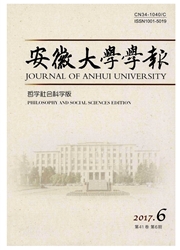

 中文摘要:
中文摘要:
With the rapid development of the Internet, recent years have seen the explosive growth of social media. This brings great challenges in performing efficient and accurate image retrieval on a large scale. Recent work shows that using hashing methods to embed high-dimensional image features and tag information into Hamming space provides a powerful way to index large collections of social images. By learning hash codes through a spectral graph partitioning algorithm, spectral hashing(SH) has shown promising performance among various hashing approaches. However, it is incomplete to model the relations among images only by pairwise simple graphs which ignore the relationship in a higher order. In this paper, we utilize a probabilistic hypergraph model to learn hash codes for social image retrieval. A probabilistic hypergraph model offers a higher order repre-sentation among social images by connecting more than two images in one hyperedge. Unlike a normal hypergraph model, a probabilistic hypergraph model considers not only the grouping information, but also the similarities between vertices in hy-peredges. Experiments on Flickr image datasets verify the performance of our proposed approach.
 英文摘要:
英文摘要:
With the rapid development of the Internet, recent years have seen the explosive growth of social media. This brings great challenges in performing efficient and accurate image retrieval on a large scale. Recent work shows that using hashing methods to embed high-dimensional image features and tag information into Hamming space provides a powerful way to index large collections of social images. By learning hash codes through a spectral graph partitioning algorithm, spectral hashing(SH) has shown promising performance among various hashing approaches. However, it is incomplete to model the relations among images only by pairwise simple graphs which ignore the relationship in a higher order. In this paper, we utilize a probabilistic hypergraph model to learn hash codes for social image retrieval. A probabilistic hypergraph model offers a higher order repre-sentation among social images by connecting more than two images in one hyperedge. Unlike a normal hypergraph model, a probabilistic hypergraph model considers not only the grouping information, but also the similarities between vertices in hy-peredges. Experiments on Flickr image datasets verify the performance of our proposed approach.
 同期刊论文项目
同期刊论文项目
 同项目期刊论文
同项目期刊论文
 期刊信息
期刊信息
